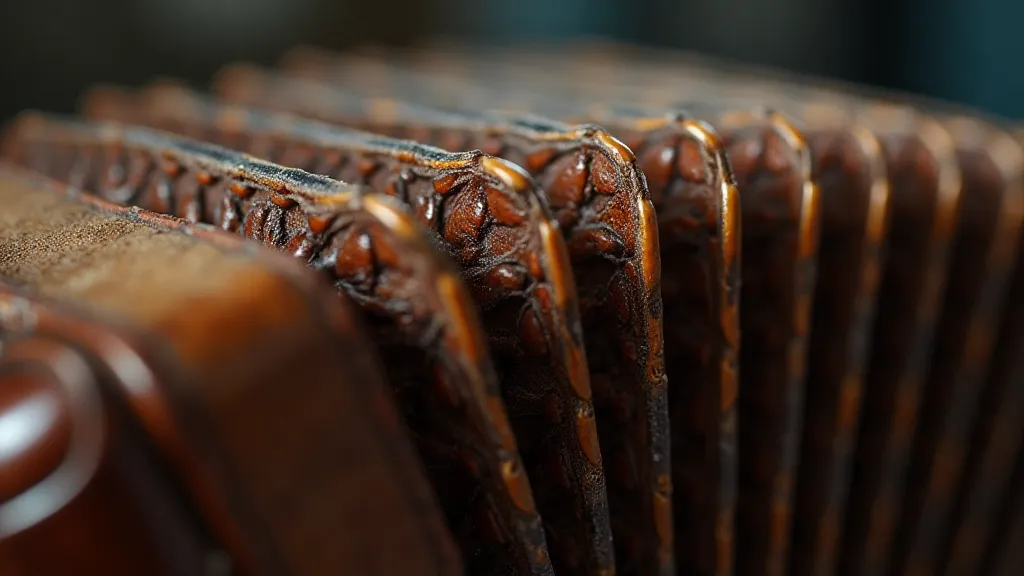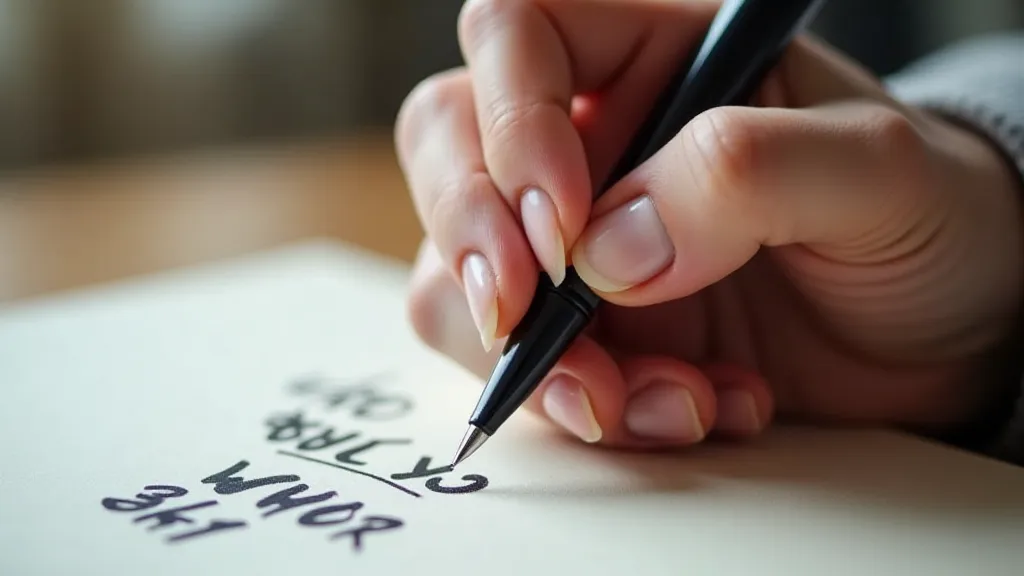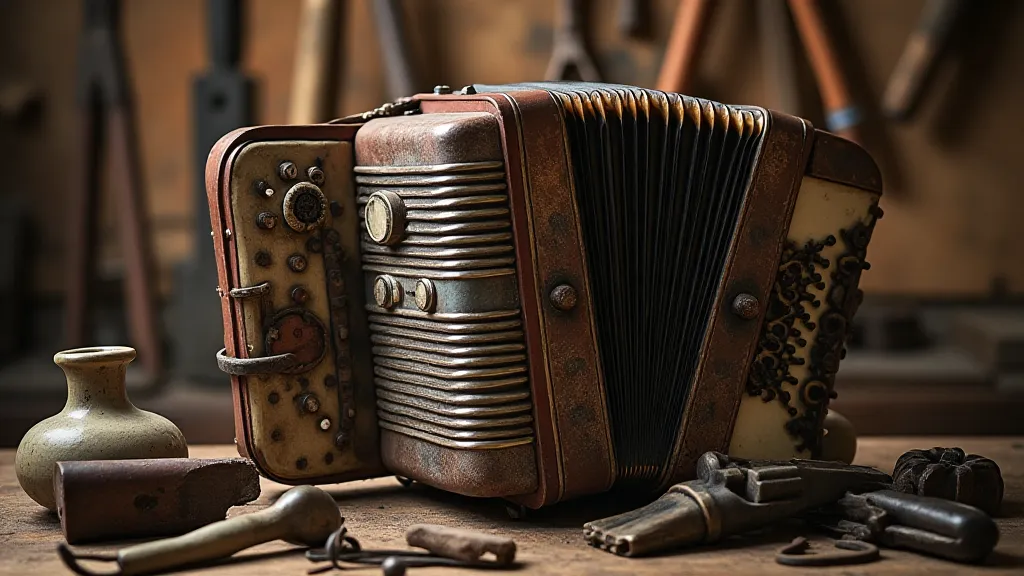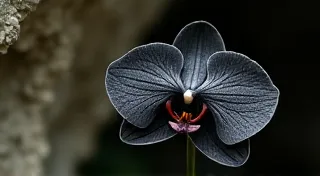The Shadowed Quill: Investigating the Impact of Pressure on Left-Handed Calligraphy
There's a particular beauty to antique accordions. The way the bellows, carefully constructed of leather and canvas, draw breath into the intricate machinery within, the echo of countless melodies held captive within the wood and metal. They speak of resilience, of hands shaping sound, of stories whispered across generations. Similarly, the journey of a left-handed calligrapher is often marked by a unique kind of resilience – a constant negotiation with tools and techniques that aren't inherently designed for us. We, the 'shadowed' among calligraphers, often feel a subtle resistance, a sense that the path is less clear. And much of that resistance stems from a single, often overlooked factor: pressure.
For right-handed calligraphers, the stroke generally flows ‘away’ from the body, allowing for a more natural, outward pressure on the pen. We, however, are working against this grain. Our hand moves towards the paper, creating a pressure that tends to drag, smear, and distort our strokes. It’s a problem exacerbated by the fact that left-handed posture, instinctively angling the paper, further complicates the issue. This isn’t a deficiency; it’s a unique challenge demanding a nuanced understanding of how pressure interacts with ink and nib.

The Historical Context: Why Left-Handed Calligraphy Feels Different
Historically, left-handedness has been viewed with suspicion, even outright negativity. While this has thankfully shifted in modern times, the legacy lingers in tools and techniques that were overwhelmingly developed for right-handed users. The very act of writing, once a sacred and laborious process, was standardized around right-handed practice. Think of illuminated manuscripts, the painstaking detail etched by monks – almost invariably right-handed. This historical context isn't to evoke pity, but to understand *why* we, as left-handed calligraphers, often feel the need to adapt, to innovate, to find our own way.
Early calligraphic tools, often crafted by hand, were designed with a right-handed bias. Nib angles weren’t always optimized for the left-hand’s approach, and pen holds evolved assuming an outward stroke. The constant need to compensate—the slight tilt of the wrist, the subtle rotation of the arm—these are reflexes born from years of navigating a system not inherently built for us. Recognizing this isn’t a failing, but an opportunity to develop a deeper connection with the craft.
The Science of Smudging: Understanding the Mechanics of Pressure
Ink smudging isn't simply about “being messy.” It's a physics problem. The pressure we exert with our left hand tends to drag the wet ink across the paper's surface before it has a chance to properly absorb. This is amplified by the tendency for left-handed posture to angle the paper toward the body, increasing friction. The angle of attack, the force applied, and the paper's absorbency all play critical roles.
The type of ink also significantly impacts the outcome. Highly saturated inks, beloved for their vibrant colors, often spread more easily. Similarly, certain papers – those with a smooth, coated finish – offer less tooth for the ink to grip, leading to increased smudging. Understanding these variables is the first step toward regaining control. Think of a master accordion repairman: they don't just replace bellows; they understand how the air flows, how the reeds vibrate, the very *music* within the instrument. Similarly, we must understand the dance between pressure, ink, and paper.
Practical Exercises: Refining Your Left-Handed Calligraphy Control
Let’s move beyond theory and into practice. These exercises are designed to help you become more aware of your pressure and develop more control:
- The 'Ghost Stroke' Exercise: Using a light pencil, make a series of long, parallel lines on your paper. Now, using a pointed nib and a very light ink (like diluted walnut ink), try to replicate these lines, focusing solely on maintaining consistent pressure. The goal isn’t a beautiful stroke, but a feeling – the sensation of evenness, of control.
- The Angle Adjustment: Experiment with rotating your paper. A slight shift – even 10-15 degrees – can dramatically alter the angle of attack and reduce the smudging effect. This is often crucial for left-handed calligraphers.
- The Nib Selection: Some nibs are inherently more forgiving than others. Broad-edged nibs, particularly those with a flexible tine, can sometimes handle the left-hand's pressure better than finer, stiffer nibs. Explore different options.
- The Paper’s Role: Invest in good quality paper with a slightly textured surface (known as ‘tooth’). This provides better ink absorption and reduces smudging. Consider papers designed for fountain pens.
- The Pressure Point Awareness: Focus on *where* you're applying pressure. Is it concentrated in your fingertip, or distributed across your hand? A more diffused pressure is generally better for control.

Beyond Technique: Embracing the Left-Handed Aesthetic
There's a quiet elegance to left-handed calligraphy, born not of mimicking, but of adaptation. Sometimes, the slight imperfection, the subtle angle, the unique flow – these aren't flaws. They're hallmarks of a unique approach, a distinct aesthetic. Just as an accordion’s slightly off-kilter bellows can give it a character all its own, our left-handed calligraphy possesses a unique charm.
The pursuit of perfect right-handed form isn't the goal. It’s about finding *your* voice, embracing your individual approach, and celebrating the resilience that comes from navigating a world not always designed for you. Like the craftsman painstakingly restoring an antique accordion, revealing its hidden beauty, we can honor the lineage of left-handed calligraphy while forging our own path, one carefully controlled stroke at a time.
The shadowed quill may require a different touch, a different perspective, but it has the potential to create strokes of remarkable beauty and profound expression.






